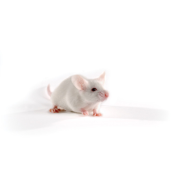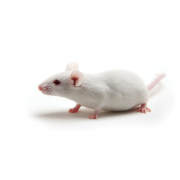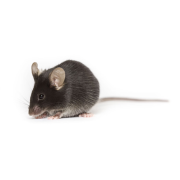Genetics - The JAX™ patented Genetic Stability Program (GSP)
The JAX™ patented Genetic Stability Program (GSP) effectively prevents cumulative genetic drift, including that caused by copy number variation, in themost popular strains of JAX™ Mice. The GSP program effectively limits cumulative genetic drift by refreshing The Jackson Laboratory’s foundation stocks with cryopreserved pedigree embryos or gametes approximately every five generations. The program was initiated in 2003 (Taft et al. 2006) and is covered by 2009 US patent 7,592,501 and 2012 US patent 8,110,721.
The Jackson Laboratory’s unique, patented GSP has several components:
- an extensive supply of cryopreserved stock for each strain;
- isolated foundation colonies, maintained by inbreeding for only five generations before refreshing with cryo-recovered stock;
- large, independent expansion and production colonies fed directly from pedigreed colonies for distribution through The Jackson Laboratory and through Charles River in Europe and Japan.
Importantly, the generations between the cryopreserved stocks and mice produced for distribution are kept to a minimum to prevent the accumulation of mutations that result in genetic drift www.jax.org/gsp.
Currently, the following inbred strains are managed using our GSP protocols:
- 129S1/SvlmJ (002448)
- B6.129P2-Apoetm1Unc/J (002052)
- C3H/HeJ (000659)
- C57BL/6J (000664)
- C57BL/6NJ (005304)
- DBA/2J (000671)
- FVB/NJ (001800)
- NOD/ShiLtJ (001976)
- NOD.CB17-Prkdcscid/J (001303)
- BALB/cByJ (001026)
- CBA/J (000656)
- DBA/1J (000670)
- NSG™ (005557)
Preventing cumulative genetic drift in these strains is particularly important because the strains have been either completely or partly sequenced: C57BL/6J was completely sequenced by the Mouse Genome Sequencing Consortium (Waterston et al. 2002); and 129S1/SvImJ, BALB/cByJ, C3H/HeJ, DBA/2J, FVB/NJ, NOD/ShiLtJ and nine other JAX® Mice strains were sequenced by the National Institute of Environmental Health Sciences Resequencing Project (Frazer et al. 2007).
Regularly “refreshing” mutant colonies maintained on these backgrounds by periodically backcrossing to our GSP inbred strains ensures that the genetic backgrounds of these mutant colonies remain genetically similar to the parent inbred and to other mutant strains maintained similarly.














